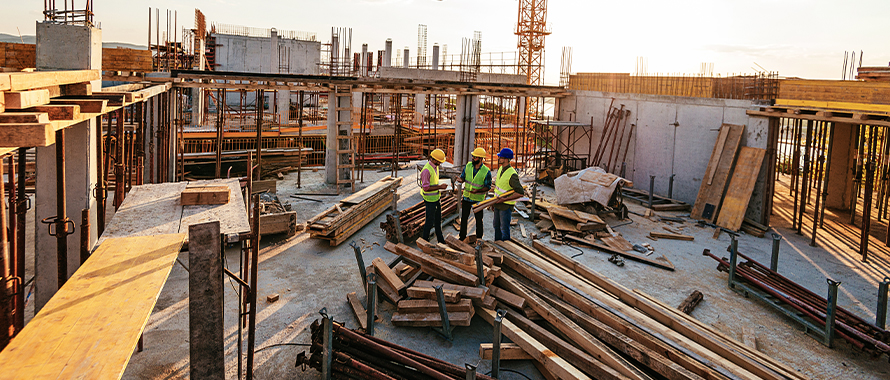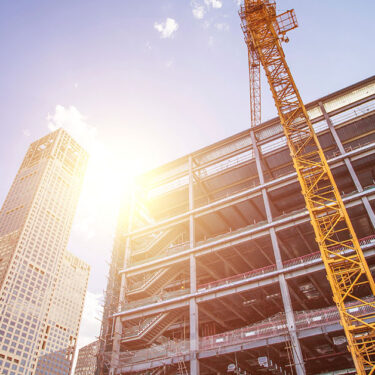From job site accidents to construction defects, the construction industry encompasses a wide range of perils. To learn more about Construction Insurance, we spoke with Susie Parks, Vice President, Broker, Casualty, Burns & Wilcox Brokerage, Scottsdale, Arizona.
What are the greatest risks currently facing contractors in the construction industry?
S.P.: Unfortunately, due to the economic fallout from COVID-19, and other issues impacting businesses, many contractors are finding it difficult to maintain enough labor to cover multiple jobs. Being understaffed means turning down jobs for added revenue at a time when it is needed most, or worse, taking on multiple jobs with limited labor—increasing the likelihood for accidents and errors.
For smaller companies especially, business expenses coupled with decreased revenue have impacted considerations for much needed insurance coverage. They run of the risk of being underinsured.
Recent years have also seen a dramatic increase in high court awards. These awards not only arise from construction defect areas, but also construction premises issues—auto accidents occurring on a construction site for example. In addition, general contractors should be especially cautious regarding building materials or drywall produced outside of North America that do not meet requisite building standards. They should be tracking the origin of the materials they use.
What kinds of insurance policies can help contractors and project owners respond to these threats?
S.P.: Commercial General Liability (CGL) Insurance, which includes Products and Completed Operations, is part of the solution to provide viable insurance coverage for most general contractors and subcontractors. A CGL Insurance policy with the proper coverages and endorsements will help exposures related to premises liability, construction and product defects, and ultimately most things that could go wrong on a project.
There are also other coverages/policies that can and should be considered to address exposures beyond general liability. Depending on their operations and projects, contractors can benefit from other policies such as Directors & Officers (D&O), Contractors Professional, Contractors Pollution (CPL), and Builder’s Risk along with Excess Insurance.
How has COVID-19 affected the Construction Insurance market?
S.P.: The pandemic has changed protocols on job sites, including PPE management, guidelines for testing and quarantines, and increased hand sanitizing. It has also extended the time needed to complete projects, due to reductions in limits on the number of employees allowed on a job site.
What steps should companies take to complement insurance coverage from a prevention standpoint?
S.P.: Proactive safety and education. It all starts with good site security and leadership to manage job sites safely and efficiently. Employee handbooks need to be followed and foremen need to meet with employees to discuss job safety on a regular basis. We help our clients review their losses and exposures in an effort to help address loss issues and understand proactive measures the insured is taking. Quality of workmanship cannot be taught, but rather instilled in the work force by management and leadership’s pride in their product.
Can you offer an example of a scenario you have dealt with that would help illustrate the risks we have been discussing?
S.P.: Some of the bigger claims I have seen recently have been trip-and-fall accidents related to contractors failing to properly mark dangerous areas on job sites to alert the public. I have seen pretty high payouts of $200,000 to $300,000 from someone breaking an ankle or arm. That is an avoidable claim—placing a worker in the area to direct individuals to walk around a certain area can make a huge difference. It is an easy thing to be proactive about.
What advice would you give brokers on increasing their success rates within the Construction Insurance market?
S.P.: As the market continues to change, attention to detail, lead time, and sufficient information to present the risk is crucial. Frame Builder’s Risk is a perfect example. The time it takes to put these deals together and the information needed is substantial, so brokers who work efficiently, understand what is needed, and where to go for information will be the most successful. Brokers must have all of their ducks in a row before going out to the construction market with submissions—they need to be impeccable. If I were a beginning broker and or I wanted to specialize in Construction Insurance, I would mentor under a broker who specializes in construction. I was fortunate to have access to several brokers at Burns & Wilcox Brokerage specializing in this area—Marc Adler, Stacy Bandy, David Gross and Adrian Smith to a name a few. I mentored under Marc Adler, my managing director. He along with the others have brought valuable insight to the subject of insurance for the construction world.
What questions should brokers be asking clients relative to these products?
S.P.: Understanding the nature of the risk, type/scope of work, experience, and loss history are all part of understanding and being able to present the risk to the market. The information for Builder’s Risk and Project Insurance will incorporate things such as GC experience, acceptable soils reports, budget review, type of construction, time frame, plot plans, etc.
The ability to provide Excess Insurance in today’s market is increasingly difficult. While there is more than enough capacity, due to the number of large losses over the past few years, how Excess limits are deployed and priced have changed dramatically—requiring more time and carriers to build the needed limits. Details on losses, defining commercial versus residential exposures, the insureds experience, and safety protocols are all part of the discussion to present a risk to market.
Construction Insurance
WHY YOUR CLIENTS MIGHT NEED IT: Construction work is inherently dangerous; since 2018, one of every five U.S. workplace fatalities has been in the construction industry. Construction projects that have structural or other issues often can lead to lawsuits of at least $1 million.
PROTECTS AGAINST: Costs relating to a range of legal, property and injury-related exposures, including those resulting from the policy holder’s negligence or error: legal defense, environmental pollution, property damage and more.
EXPERT OPINION: “Some of the bigger claims I have seen recently have been trip-and-fall accidents related to contractors failing to properly mark dangerous areas on job sites to alert the public. I have seen pretty high payouts of $200,000 to $300,000 from someone breaking an ankle or arm,” said Susie Parks, Vice President, Broker, Casualty, Burns & Wilcox Brokerage.



